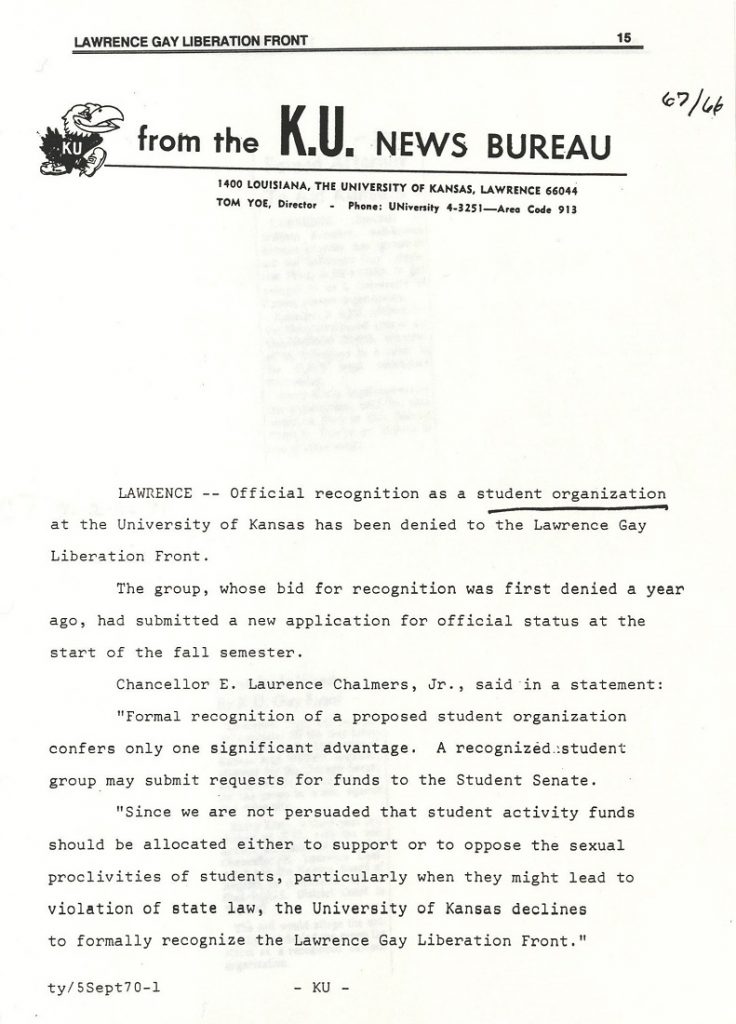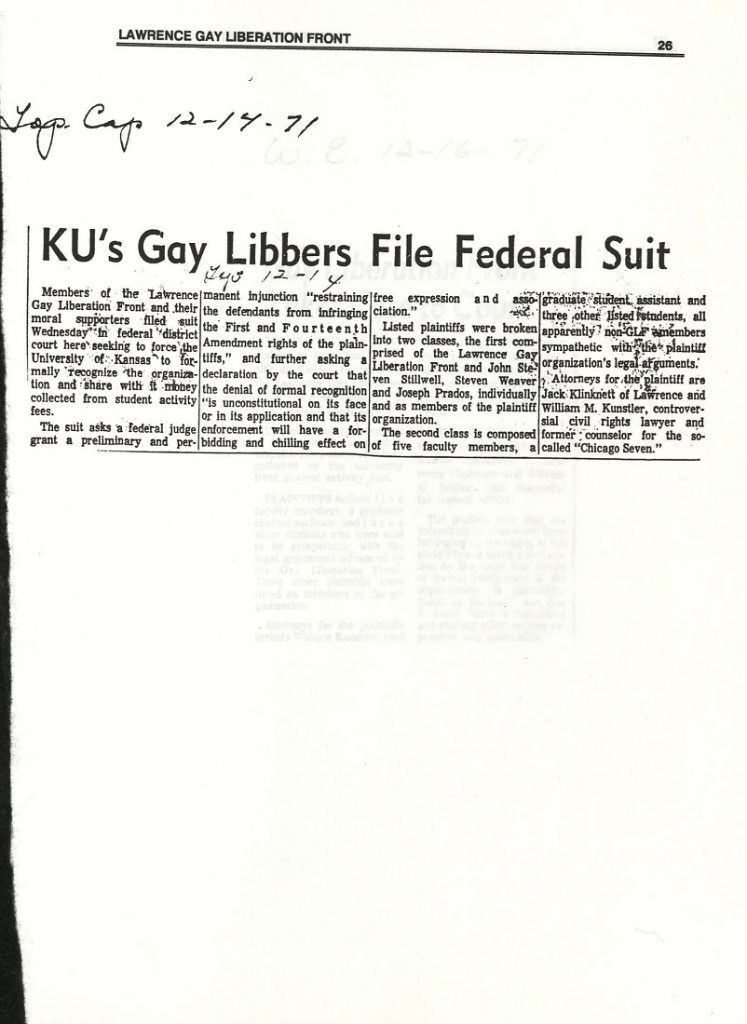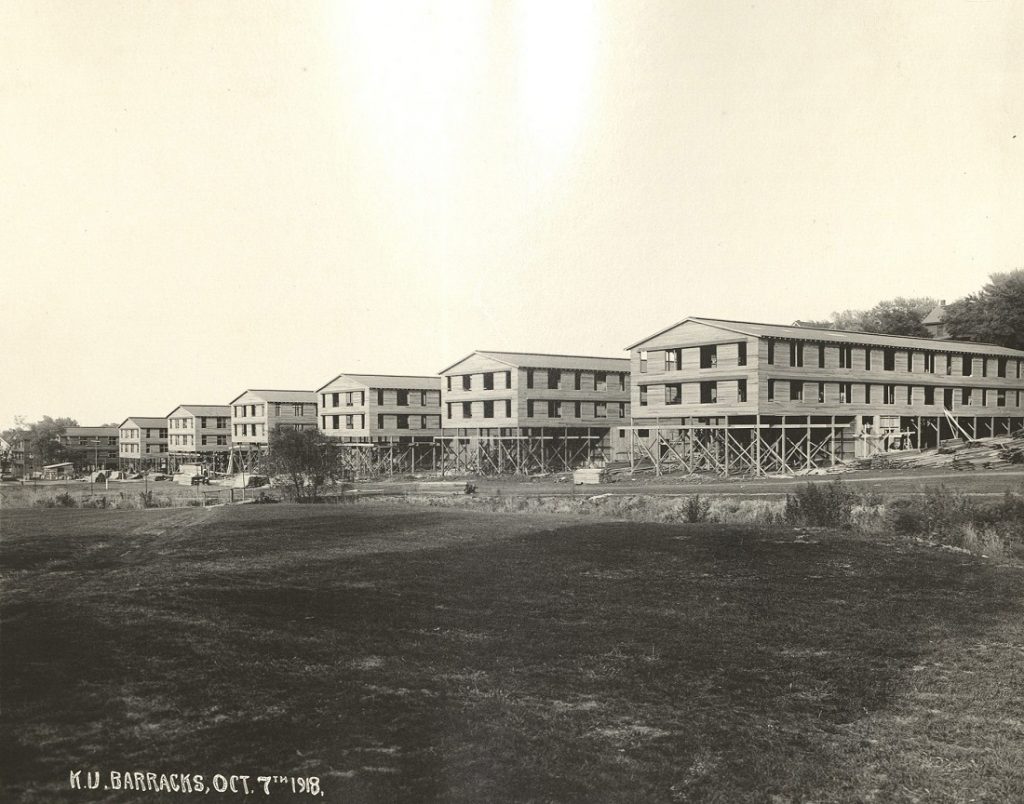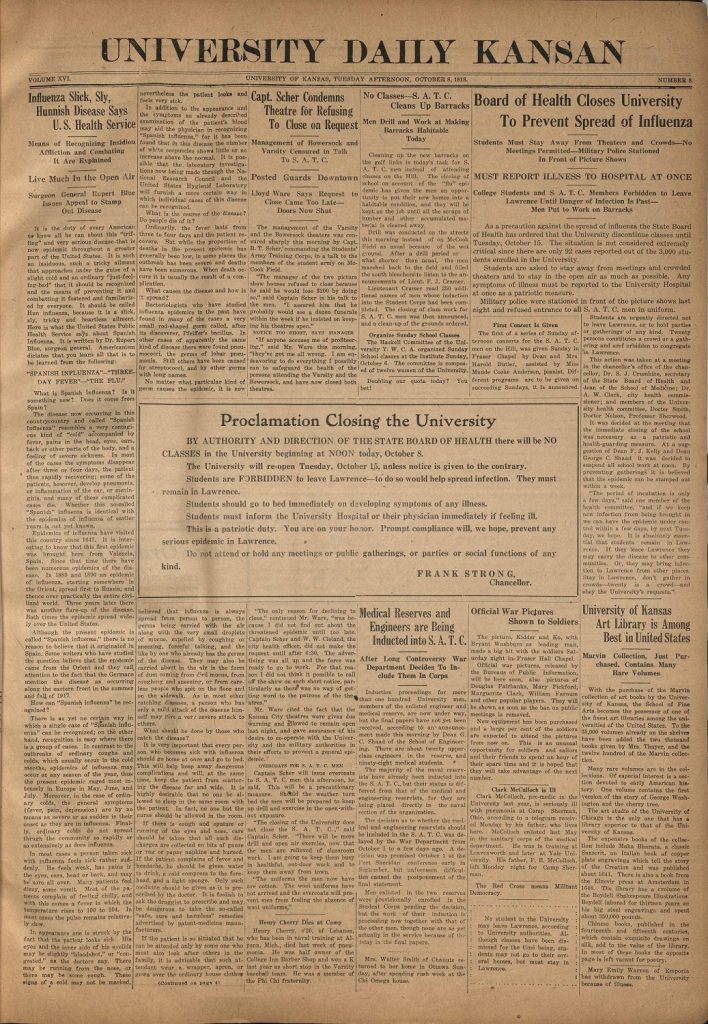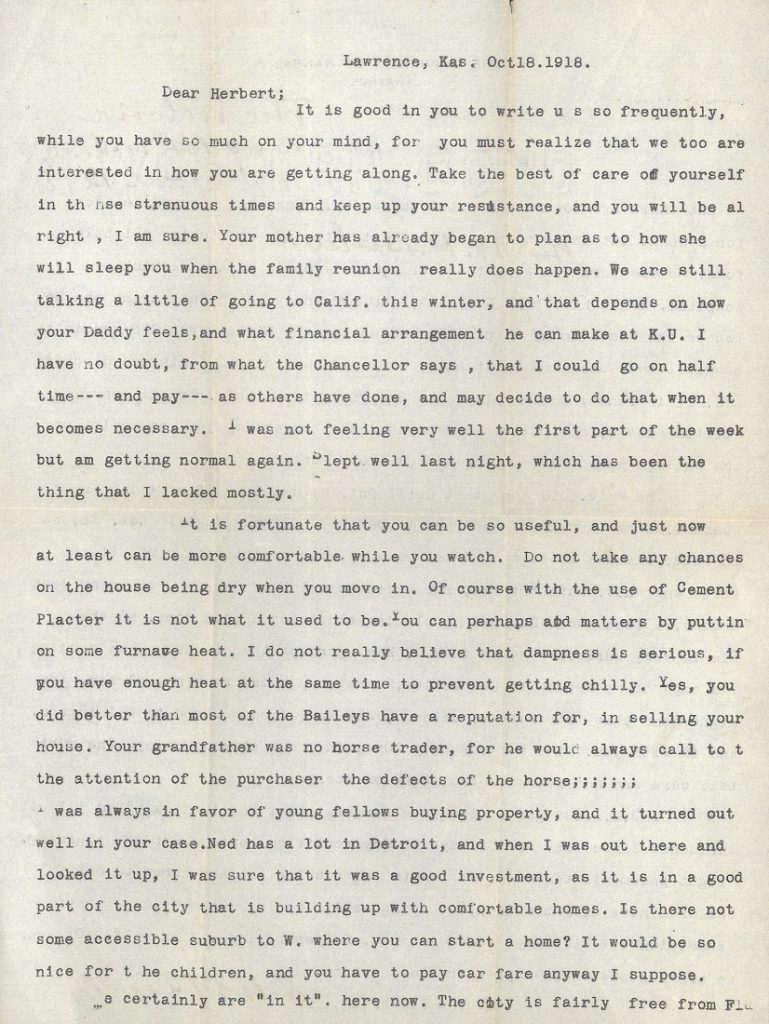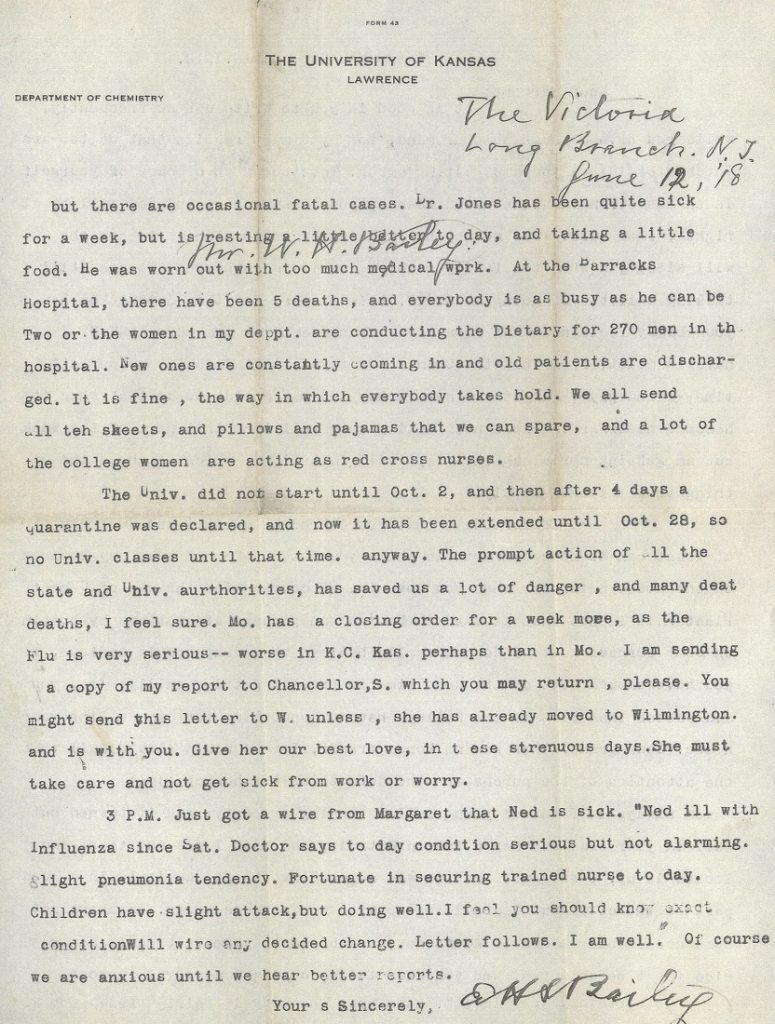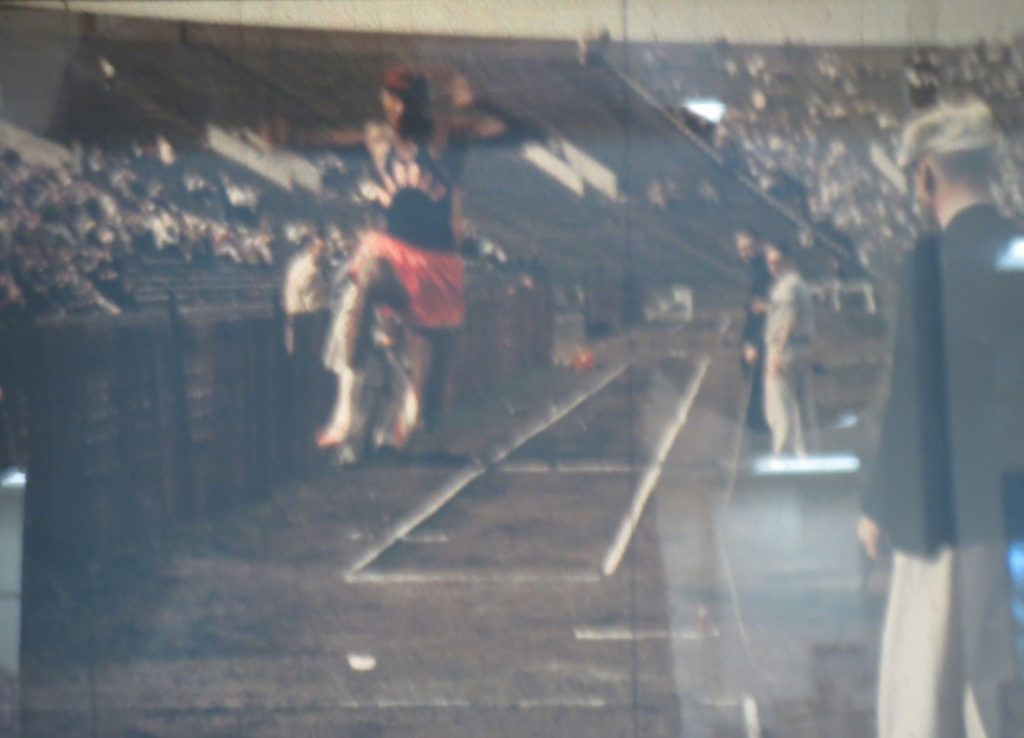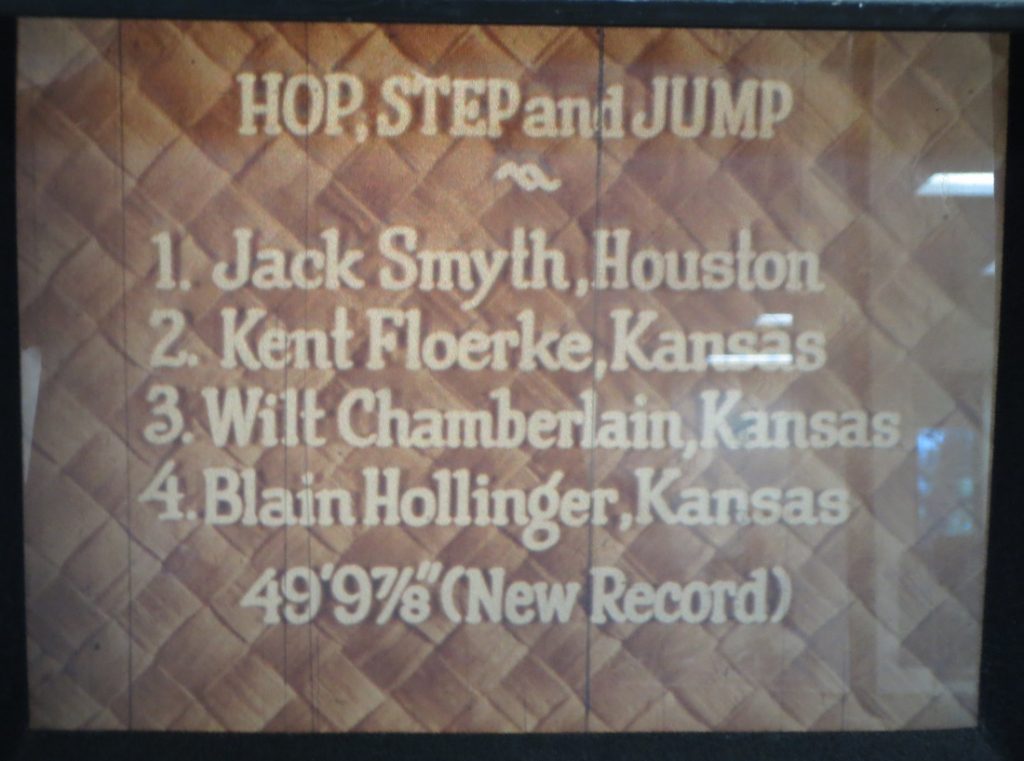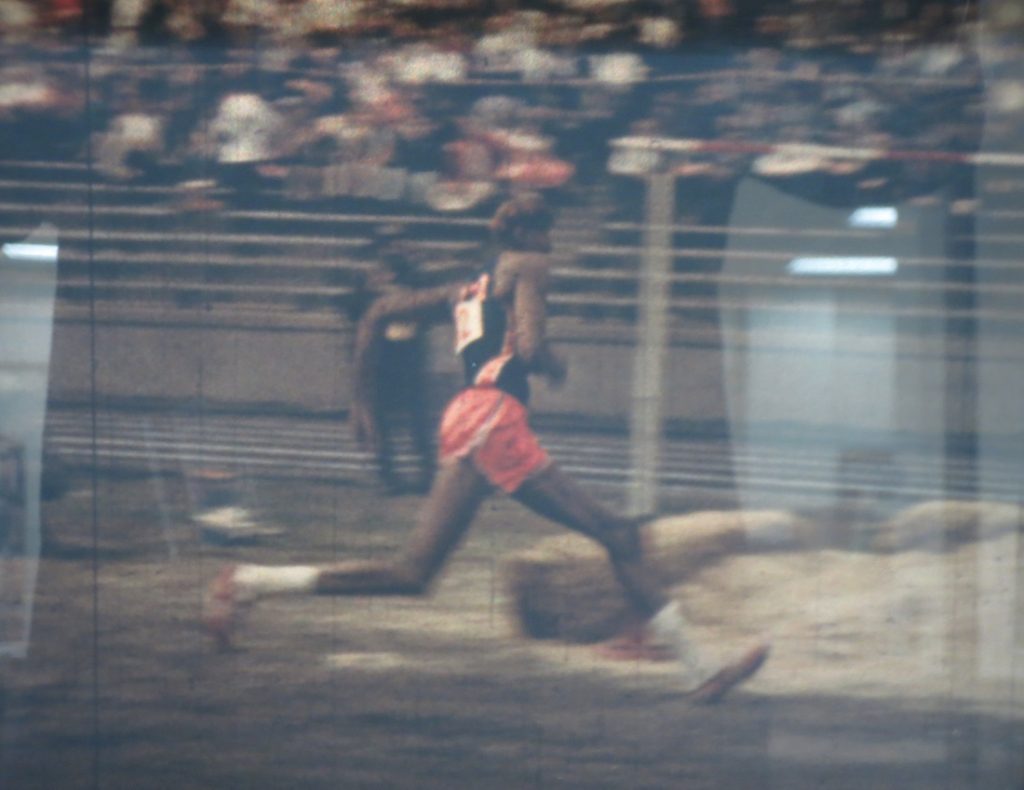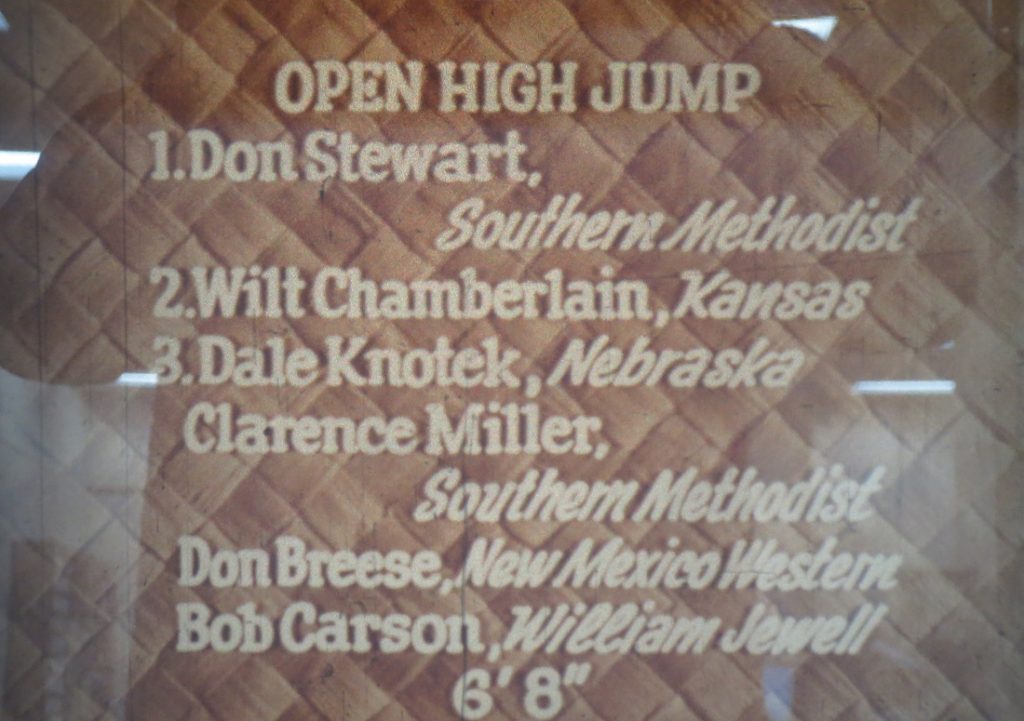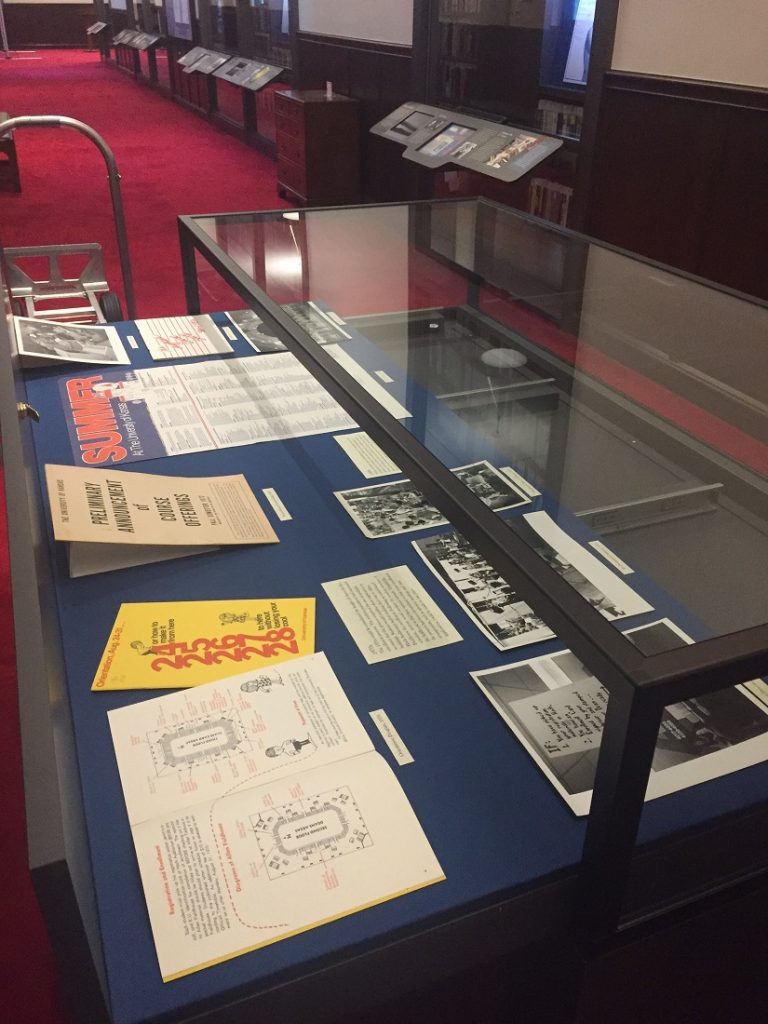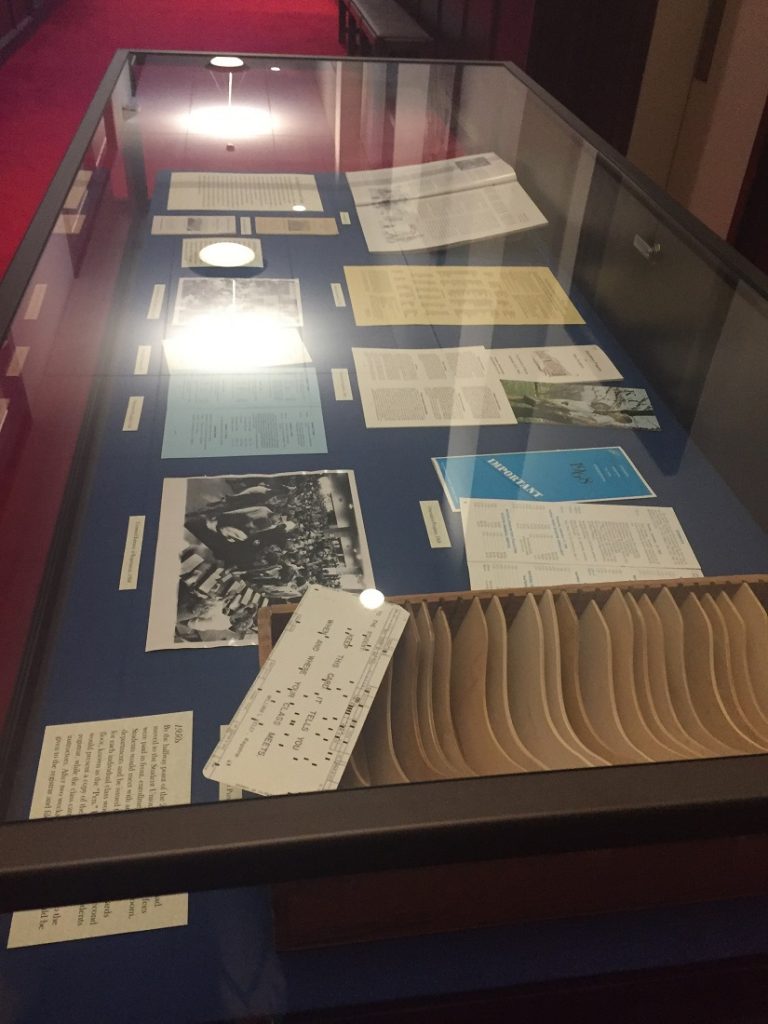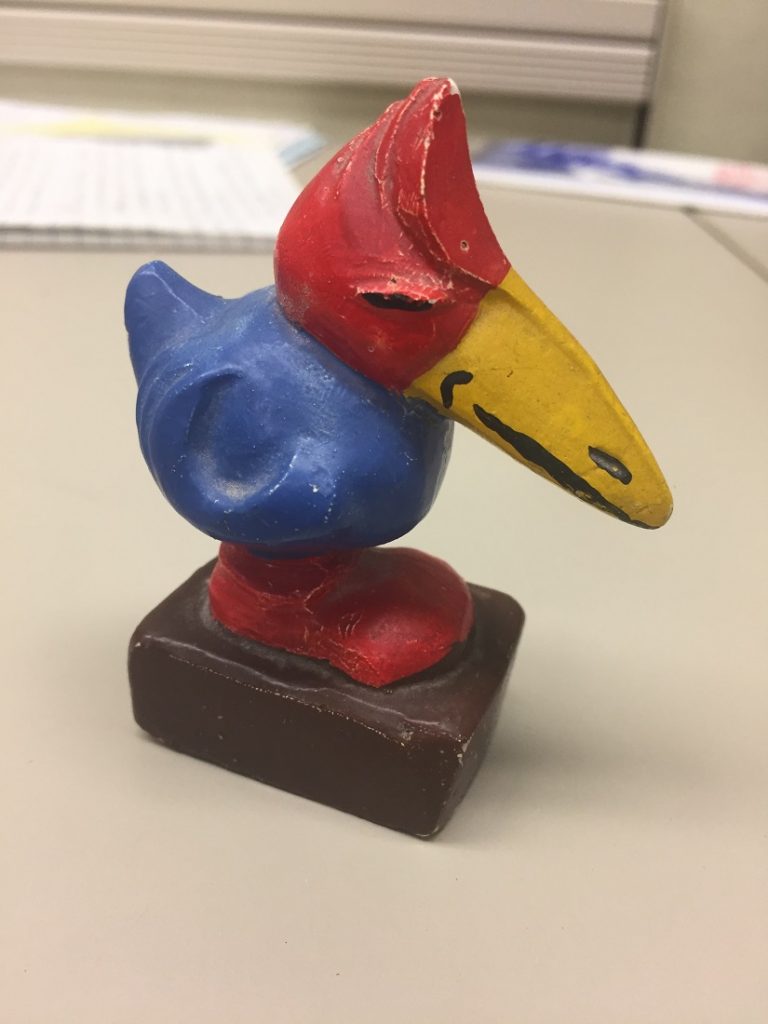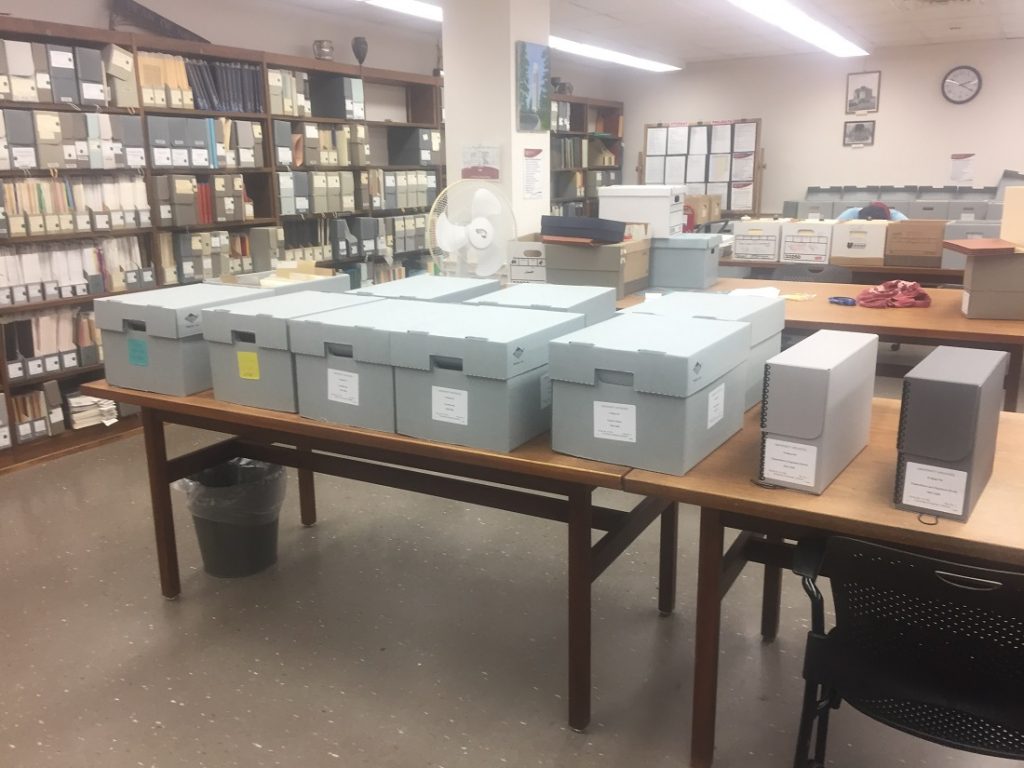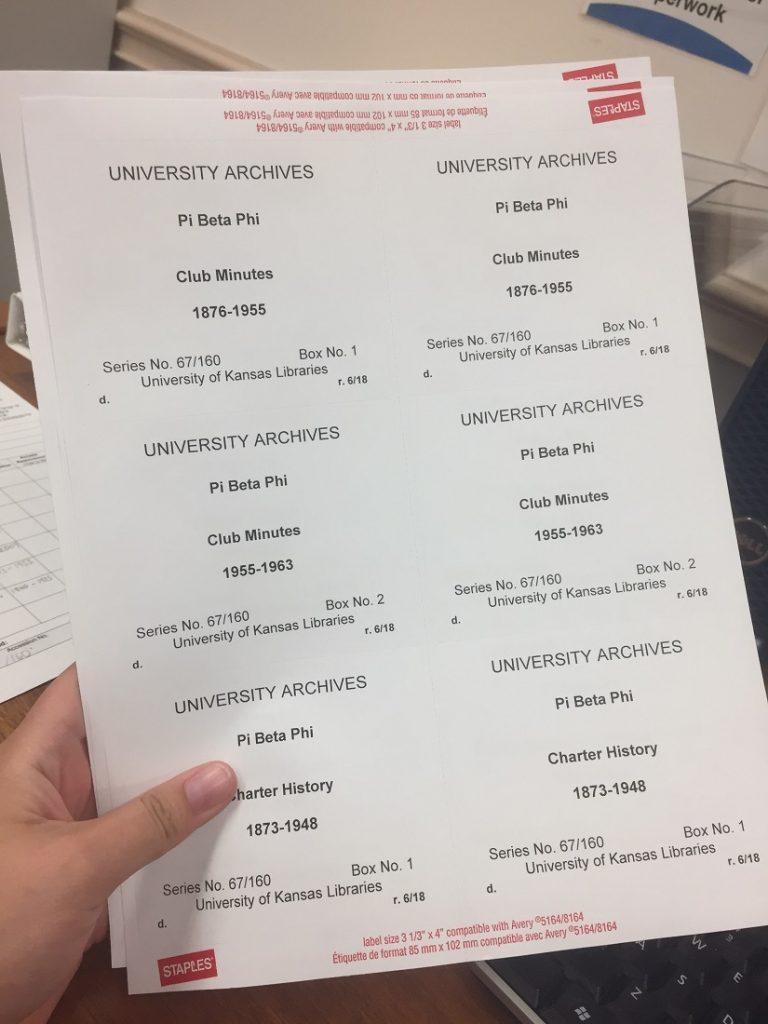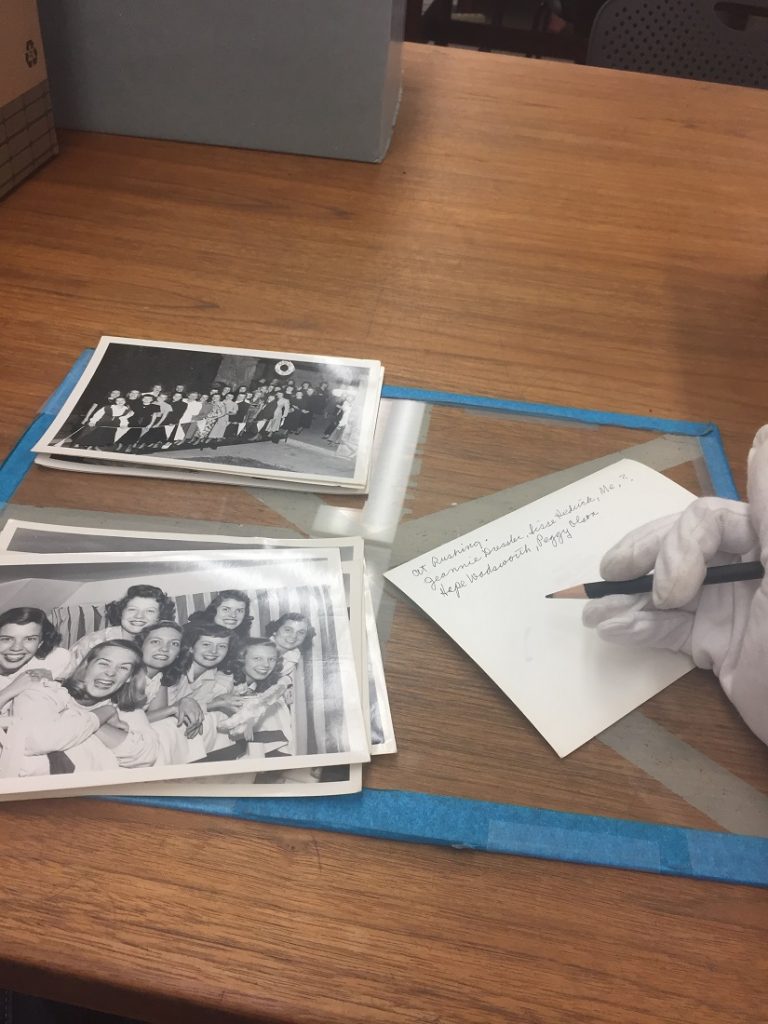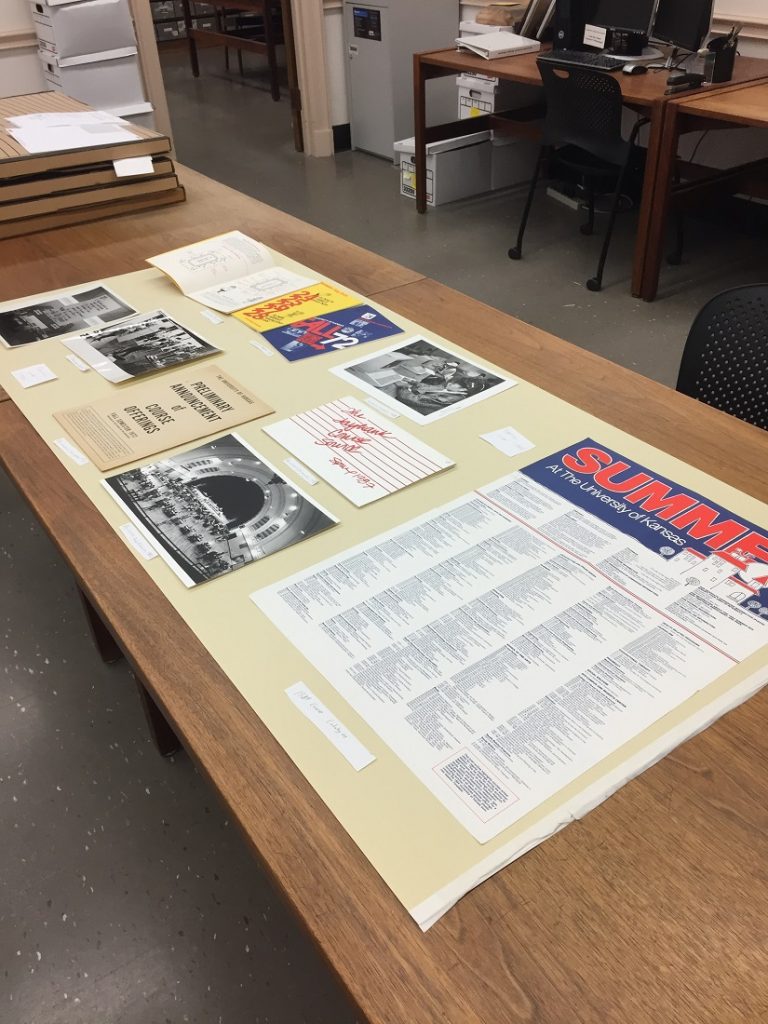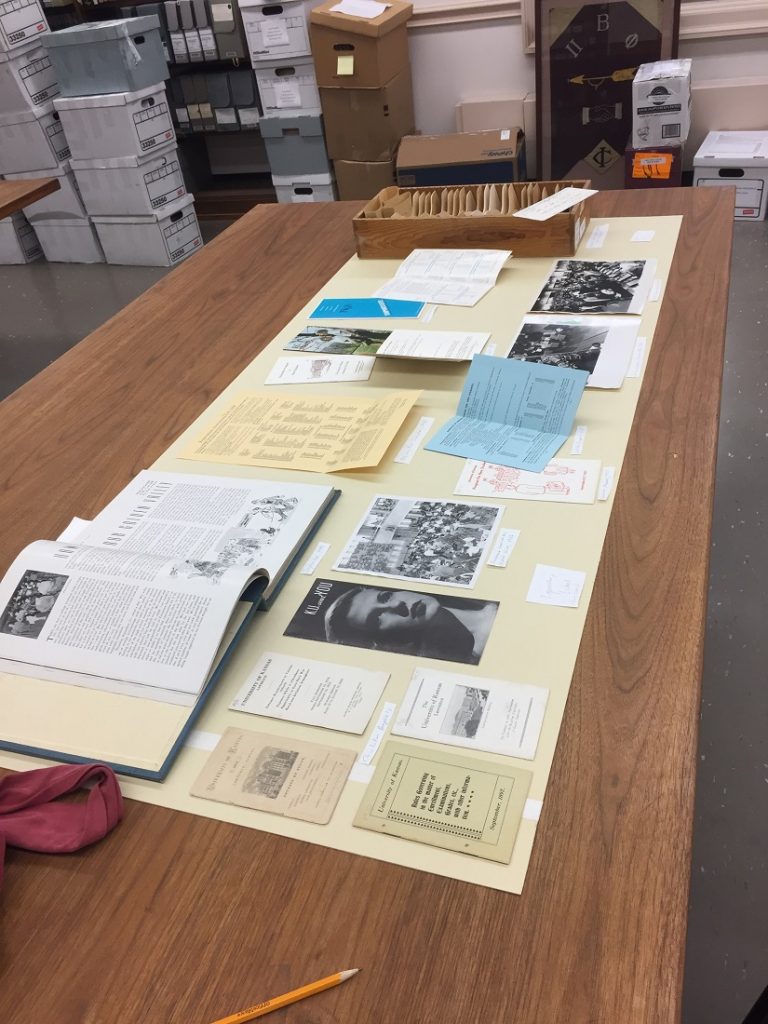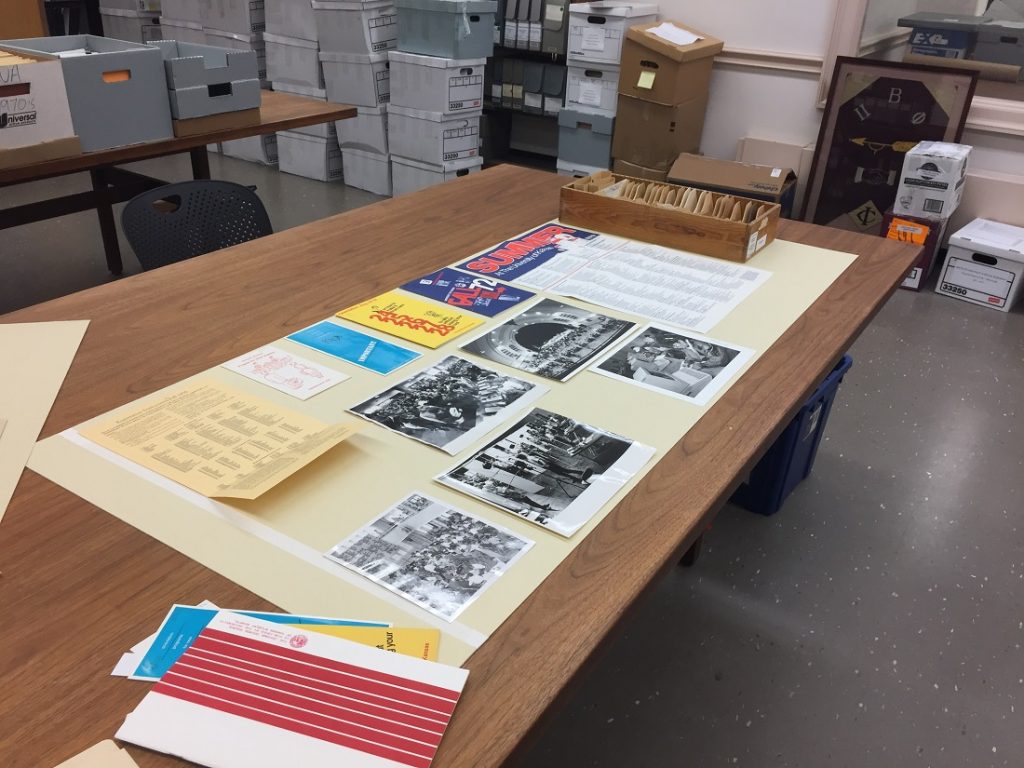Lawrence Gay Liberation Front: Road to Recognition
October 31st, 2018In honor of LGBT History Month, we are looking back at some of KU’s LGBT history.
In the late 1960s, gay and lesbian organizations were being created all over college campuses in the United States as a response to the Stonewall Riot in New York City. In 1969, students from the University of Kansas decided to form their own LGBT organization, titled the “Lawrence Gay Liberation Front.”
The Lawrence Gay Liberation Front had a few trials at the beginning of their formation. One of their main goals after establishing themselves was to secure funding through Student Senate. This required being formally recognized as a student organization at the University of Kansas. The group tried on multiple occasions to appeal to Chancellor Laurence Chalmers to be recognized as a student organization at KU. Here is what the Chancellor responded to them after their second attempt for recognition:
KU news release about the Lawrence Gay Liberation Front,
September 5, 1970. Call Number: RG 67/66. Click image to enlarge.
After being denied formal recognition from Chancellor Chalmers, the students of the Lawrence Gay Liberation Front decided that they had no other choice but to sue the University of Kansas for infringing on their first and fourteenth amendment rights. The suit was filed in late 1971, two years after the group had formed. Below is a newspaper clipping explaining the federal suit:
A Topeka Capital Journal article about the Lawrence Gay Liberation Front,
December 14, 1971. Call Number: RG 67/66. Click image to enlarge.
Unfortunately, the lawsuit was met with a denial of the organization’s request from U.S. District Court Judge George Templar. The group appealed the ruling multiple times, but in 1973 their fight for recognition was halted by the Supreme Court refusing to hear their case. This frustrated the students of the Lawrence Gay Liberation Front, but they did not disband. Instead, the organization continued to grow and gain support throughout the decade of the 1970s. It was not until a decade after the Lawrence Gay Liberation Front was formed that they received formal recognition as a legitimate student organization at the University of Kansas.
While the road to recognition was difficult for the Gay Liberation Front (renamed Lawrence Gay Liberation Incorporated by the time they were formally recognized), perseverance by a decade of students allowed the group to flourish. Without the dedication of these students, KU would not have the reputation of being a safe haven for LGBTQ+ students in Kansas that is has today. This group is still present on campus today, now titled Spectrum KU.
Emma Piazza
Public Services Student Assistant

